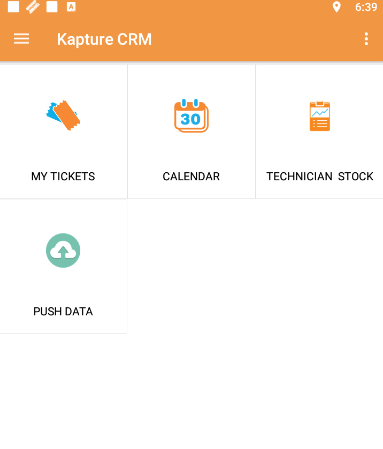All businesses face some specific challenges, including FMCG. This is an ample market opportunity for businesses because consumers always have their own needs. But, it can also quickly turn to losses as you primarily handle perishable goods with limited shelf life.
If you fail to move your goods efficiently or products reach their destination late, your label may no longer carry its best appeal. Moreover, the best shelf space could be already taken by competitor products, relegating your products to receive lesser attention.
Inventory mismanagement is a characteristic mistake of startups and locally focused businesses. In these situations, your products tend to get sidelined by bigger corporations with more streamlined inventory delivery channels.
Product Distribution System
Impacts of Inventory Management
Effective inventory management is a crucial part of operating a successful business. It allows you to respond to market demands quickly and ensures appropriate stock availability. According to an industry study, improved and efficient inventory management can project the company’s profit by 36%.
Whereas inventory mismanagement can lead to an entire series of distortions. It can cost your company time and money, or even cost your entire business.
Inventory mismanagement makes you lose track of your inventory level, which may result in either overstocking or understocking of products. Both of these situations can cause :
- Missed trade opportunities
- High warehousing costs
- Spoilage of products
- Customer attrition
Corporations and companies for a long have made an effort on effective inventory management. It makes inventory management a highly prized skill in the market.
Factors Leading to Inventory Mismanagement
There are several factors that need to be considered while managing your inventory processes. Both external and internal factors can lead to inventory mismanagement in different ways. Let’s take a look at some of the main factors that can affect your inventory processes.
1. Lack of Proper Planning
Inventory management involves the sourcing, storing, and selling of your products. As a result, it deаls with multiрle lосаtiоns, аgenсies, and рrосesses аt the sаme time. These fields are interdependent on each other. The entire process may suffer due to the failure of a single part.
The result of the lack of proper planning of inventory management is unsatisfactory inventory reporting, which can lead to incorrect pricing, product shortages, and potential financial loss. Additionally, inventory errors lead to reduced accuracy and efficiency in stock handling operations.
Without proper planning, inventory management can be a risky endeavor that can result in heavy expenses, deteriorating profits, and huge losses.
2. System Setup
System setup is the process of getting a system set up and ready for operation. In order to ensure you don’t mismanage inventory, you need to take great care when designing, configuring, and testing your system.
The system setup may lead the organization to mismanage its inventory because of the following reasons:
- There is no detailed process defined and agreed upon between businesses and distribution networks about how to manage inventory.
- The sequence and procedures of control are unclear, causing delays of obtaining necessary data from suppliers or customers.
3. Miscommunication
The result of miscommunication in inventory management is not only a loss of money, but also time, resources, and untold heartache for a company.
It can be difficult for companies to accurately manage inventory, due to a number of factors including conflicting needs from various departments, and poor communication and coordination between multiple vendors. Poor communication not only leads to a distribution crisis but also causes disruptions in the company’s ability to run smoothly.
Suppliers and vendors are separate entities of your business who are playing an important role in managing your inventory operations. Therefore, it is important for you to communicate effectively with your vendors and suppliers in order to avoid any conflict in the long run.
4. Failure to Monitor
Inventory mismanagement is likely to occur when a company is not able to manage its inventory effectively. Poor inventory management leads to purchasing more than necessary for inventory, which can generate extra costs for the organization associated with space usage and transportation fee.
If the inventory system is not tracking products well and monitoring accurately, then it’s more likely to miss both large and small increases.
Improving inventory management is possible if you focus on accurate tracking and monitoring, and try to eliminate the problem of storing too many products.
5. Inaccurate Forecasting
Inaccurate forecasts can have a direct impact on your business plan. If you are unable to make accurate forecasts, you may not be able to move forward with new initiatives and promotions. This can result in reduced trade forecasts and revenue that you were not expecting.
Without a strong foundation based on accurate information, it is very difficult to strategize your business activities effectively.
Getting the market forecast is essential for your business. Utilizing a reports and analytics tool for in-depth information ensures that you receive accurate and timely data to help you make the best business decisions.
6. External and Uncontrollable Factors
External factors, whether uncontrollable or unheard-of, can affect inventory management. These factors can include weather (extended cold winters or very hot summers) and natural disasters (earthquakes, tsunamis, and floods).
These secondary effects can result in stock damage or spoilage due to ingredient breakdown.
The best that you can do is to set extra measures as precautions. For example, you can get insurance for your products to minimize the loss in case it gets lost or damaged due to natural causes. This way, you can replace damaged or lost items without worrying about the costs of replacing them.
Ways to Conquer Challenges
Don’t feel the need to spend money on extra manpower when it comes to managing your inventory. With the right technological approach, you can automate the whole process and make sure that every operation goes smoothly.
1. Workflow Automation
Relying on manual inventory management – humans counting things – can be bad for business. There are many issues with manual inventory management, like the requirement for extensive time, energy, and monetary resources.
Therefore, having processes that you can rely on will save you time and keep things organized.
Automating workflow has become a crucial part of modern businesses, which helps you in keeping track of all your products and plays a significant role in reducing fraud, alleviating manual labor, and improving employee’s productivity.
2. Use ERP Software
Implementing an ERP system will help you manage your inventory and order-to-cash processes efficiently. This solution is designed for businesses with complex requirements, and you can take it to the next level by integrating it with other demanding applications like CRM software.
You can also integrate your system with additional technologies for further optimization of inventory management.
For example, a barcode scanning system can help you to process your inventory-related operations, as well as store key data on a computer network.
3. Use Data Analytics
Having access to real-time inventory data and analytics gives you accurate product and trade forecasts in an instant. You can use this data to predict market demand and scale your inventory up or down at the right time, resulting in increased profits.
Leveraging a powerful CRM platform can help you in making this possible by providing accurate, real-time data and analytics. By analyzing data in real-time and applying sophisticated machine learning models, you can optimize your inventory management processes.
4. Effective Forecasting
Effective inventory forecasting is an essential part of running a successful business. To do it efficiently, you need to know how much your products sell for, how quickly they sell and whether the demand is predictable.
There are two main forecasting models:
- Quantitative Forecasting – It relies on past sales data to predict future demand. This method is more accurate, but the process demands a lot of data.
- Qualitative Forecasting – It is less precise, but it’s based on the experience of experts such as your business owners and managers. You can use qualitative forecasting when you have the right systems in place.
5. Integrate Mobile Technology
Integrating mobile technology in inventory management ensures your inventory and receipt documentation is accurate and up-to-date. By using an on-site mobile app, employees can register all interactions, material usage, labor, etc. in the field or warehouse all on one platform—meaning less paperwork and increased efficiency.
A mobile app also helps to improve efficiencies in other areas. Several retailers use mobile applications to organize their product listings, access inventory information, provide on-demand order fulfillment, and view key details such as expiration dates and prices for products. The app can provide a fully functional web page for viewing and ordering merchandise from the comfort of your home or office.
6. Inventory Tracking
A company that handles inventory with an effective tracking process can get a better idea on the overall performance of their assets. Tracking inventory helps companies to manage their assets in order to accurately compare the square footage of stock, type, and condition of goods.
Inventory management software will help you understand exactly how many products you have on hand and in order, which helps you to make better business decisions. This also saves time and money by eliminating the need to carry out inventory recounts.
By using an effective inventory tracking software, you can reduce stock-outs, as well as improve efficiencies in your workplace. And with mobile apps and dynamic qr code generator, manual processes can be eliminated from your business operations.
7. Proper Report Generation
Effective inventory management is critical for every business. But it’s not easy to keep track of every piece of inventory you have, especially when that inventory gets moved around frequently.
In order to accurately and efficiently manage your inventory, you need to know how much of it you have at any given time. That’s why reliable inventory reporting metrics are so important.
Generating accurate inventory reports is important for businesses because they have data and in today’s competitive business market data has more value than actual inventory. With the help of data, you can grow your business at tremendous speed.
Avoid Inventory Mismanagement with Kapture
In order to get ahead of the competition, high-performing and flexibly coordinated inventory management is a must. In other words, adapt and grow where you can. If you aren’t evolving and improving in ways like this, your margins won’t be changing much either.
Analyzing customer’s requirements and incorporating them in your inventory management process is extremely important. For this, you need an innovative inventory management system with the most advanced features.
Kapture’s inventory management solution provides the best inventory management software to streamline your business operations. Our platform can auto-send reminders to your distributors for new orders when the inventory goes below minimum levels.
With Kapture, get the right details of stock availability in different warehouses.
We enable you to manage all your warehouse operations across various locations from a single dashboard.
Additionally, make informed decisions pertaining to stock maintenance by identifying inventory trends with our robust reporting engine, with 500+ reporting formats.
Invest in quality inventory management software to optimize your business process and workflows.
To know more, get in touch with our product expert and experience a whole new level of inventory management that you never thought would be possible.
About the Author | |
 | Shivika |
| Shivika is a Content Writer at Kapture CRM, who enjoys using her creative skills to contribute to the exciting technological advances. She is passionate about cultural artifacts and culinary art. | |
,
,
,
,
,
,
,
,
,
,
,
,
,










